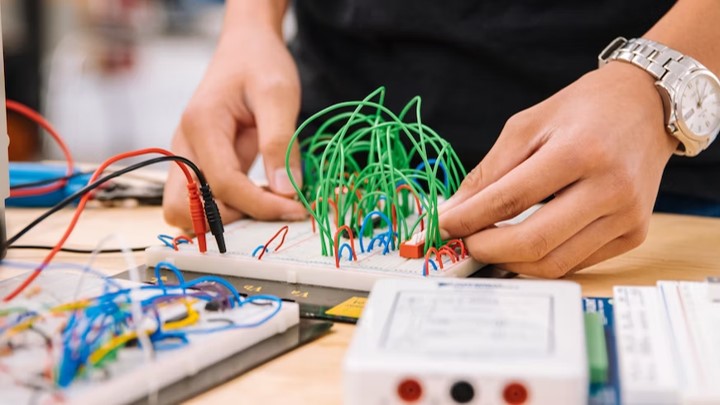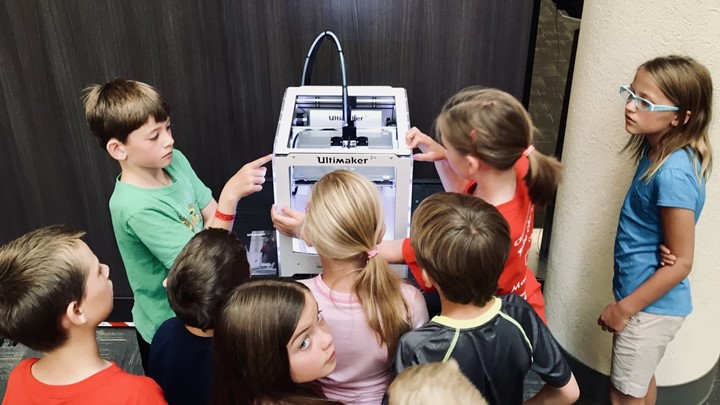Last Updated on April 22, 2023 by Uncle Pat Ugwu
Have you ever found it difficult to concentrate on your work in a noisy classroom? Or have you noticed that students in your classroom struggle to stay on task when the noise level gets too high? Managing noise levels in classrooms is an important factor in creating a positive learning environment for students. That’s where a Classroom Noise Monitor comes in. I have written good tips for new career teachers here.
A Classroom Noise Monitor is a device that measures the noise level in a classroom and provides feedback to students and teachers about the current decibel level. By helping to regulate noise levels, a Classroom Noise Monitor can improve concentration and behavior, and ultimately lead to a more effective and productive learning environment.
In this blog post, we’ll take a closer look at how Classroom Noise Monitors work, the benefits of using one in your classroom, and some tips for implementing a Classroom Noise Monitor in your own educational setting. So, if you’re interested in creating a more conducive learning environment for your students, keep reading!
How a Classroom Noise Monitor Works
So, how exactly does a Classroom Noise Monitor work?
Generally, a Classroom Noise Monitor consists of a microphone that picks up sounds in the room and a device that displays the decibel level in real-time. Some Classroom Noise Monitors may also include additional features or functionality, such as volume control, alerts, and data tracking.
To use a Classroom Noise Monitor, you simply place the device in the classroom and turn it on. The microphone will continuously pick up sounds in the room and measure the decibel level. This information is then displayed on the device, usually in the form of a visual indicator such as a bar graph or LED lights.
For example, a Classroom Noise Monitor may display green lights for a low decibel level, yellow lights for a moderate decibel level, and red lights for a high decibel level. This allows students and teachers to easily see at a glance whether the noise level in the room is within a comfortable and productive range.
Some Classroom Noise Monitors may also include volume control, allowing you to adjust the volume of the device itself or the volume of the microphone. This can be helpful if you want to fine-tune the sensitivity of the device or if the noise level in the room is particularly high or low.
Additionally, some Classroom Noise Monitors may include alerts or notifications to let you know when the noise level in the room exceeds a certain threshold. This can be helpful for reminding students and teachers to keep the noise level down or for alerting you to any unusual spikes in noise.
Finally, some Classroom Noise Monitors may offer data tracking, allowing you to track and analyze the noise levels in your classroom over time. This can be useful for identifying patterns and trends in noise levels and for finding ways to improve the learning environment with technology.
Benefits of Using a Classroom Noise Monitor
Using a classroom noise monitor can have several benefits for both students and teachers. Here are some key points to consider:
1. Improved student concentration and behavior
Excessive noise in the classroom can be a major distraction for students, leading to difficulty in focusing and retaining information. A noise monitor can help keep the noise level in check, allowing students to better concentrate on their work and learn effectively. This can also lead to improved behavior, as students are less likely to act out or disrupt the class when they are able to focus on their work.
2. More effective learning environment
A noise monitor can improve the effectiveness of the learning environment by keeping the noise level at an optimal level for concentration. This is particularly helpful for students who are sensitive to noise and may have difficulty focusing in a noisy or chaotic classroom. By maintaining an appropriate level of noise, a noise monitor can create a more conducive learning environment for all students.
3. Support from research
There is some research to support the use of noise monitors in education settings. A study published in the journal “Noise and Health” found that students in classrooms with lower noise levels had higher test scores and reported better concentration compared to students in noisier classrooms. Another study published in the “Journal of Educational Psychology” found that students in classrooms with reduced noise levels had better academic performance and less absenteeism.
4. Increased teacher productivity
Teachers can be more productive when they don’t have to constantly deal with disruptive noise in the classroom. A noise monitor can help keep the noise level in check, allowing teachers to focus on teaching and providing support to their students.
5. Better classroom management
A noise monitor can be a useful tool for teachers to manage their classroom, as it provides a visual representation of the noise level and allows teachers to take action to reduce it if necessary. This can help create a more orderly and structured classroom environment, which can be beneficial for both students and teachers.
How to Choose the Right Classroom Noise Monitor
When choosing a classroom noise monitor, there are several factors to consider. Here are some tips and considerations to keep in mind:
- Size of the classroom: The size of the classroom will determine the range and sensitivity of the noise monitor you need. For example, a larger classroom may require a more powerful noise monitor with a wider range and higher sensitivity, whereas a smaller classroom may be able to use a simpler, less powerful noise monitor.
- Type of display: Noise monitors come with different types of displays, including analog meters, digital displays, and LED lights. Consider the type of display that will be most effective and easy to use in your classroom. For example, an analog meter may be more intuitive for some students, while a digital display may be more precise and easier to read.
- Additional features: Some noise monitors come with additional features that may be useful in the classroom, such as a timer or volume control. Consider whether these features would be useful for your needs and if they justify the additional cost.
- Types of noise monitors: There are several types of noise monitors available, including handheld devices, wall-mounted monitors, and portable monitors. Handheld devices may be more convenient for teachers to use, but they may not be as visible to students. Wall-mounted monitors can be more visible to students, but they may be more difficult to move around. Portable monitors may be the most flexible option, but they may not be as accurate as other types of monitors.
You can check Educators Technology Blog for a list of classroom noise monitor.
Related Keywords
- classroom noise monitor online
- free online noise meter for classroom
- classroom noise monitor with alarm
- classroom noise monitor traffic light
- classroom noise monitor app
- bouncy balls
Final Thoughts
Using a classroom noise monitor can be a beneficial tool for teachers looking to create a better learning environment for their students. By helping to manage noise levels in the classroom, a noise monitor can improve student concentration and behavior, create a more effective learning environment, and enhance student engagement. With various types and features available, teachers can choose a noise monitor that best suits their needs and budget.
By investing in a noise monitor, teachers can help improve the learning experience for their students and create a more productive and enjoyable classroom. Aside from classroom noise monitor, there are other technological tools for teaching you should be using.







